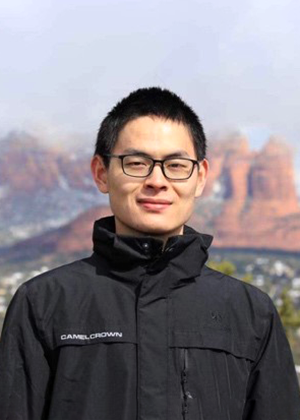USTC Astronomy Seminar Series: 2024 Spring
Probing Cosmic Reionization with JWST/NIRSpec Lyα observations
陈祖诒 博士
亚利桑那大学
2024/07/01, 4:00pm , the 19th-floor Observatory Hall

报告人:
Zuyi Chen (陈祖诒) is a PhD candidate in Steward Observatory, the University of Arizona, working with Prof. Dan Stark. He uses a combination of JWST NIRCam imaging and NIRSpec spectroscopy to study galaxies in the first billion years after the Big Bang, with a particular focus on their stellar populations, assemble history, and ionizing spectra. He uses these observations as a probe of the timeline of cosmic reionization as well as the growth of ionized bubbles in the early universe. In addition, he is also interested in searching and characterizing extremely metal-poor dwarf galaxies in the local universe, using them as unique laboratories to understand star formation activities at metallicities similar to those in early galaxies. Before coming to Steward, he obtained his B.S. from University of Science and Technology of China in 2019.摘要:
The JWST is ushering in a new era of observing galaxies in the reionization era, providing us new insights into this last major phase transition of the Universe. The Lyα emission from young star forming galaxies, which is sensitive to the presence of neutral HI along the line of sight, has been used as an important probe of the reionization process. JWST/NIRSpec offers spectroscopic capabilities that allow for efficient detections of z>~6 Lyα emission lines in the absence of atmospheric OH lines down to very faint continuum magnitudes (~ 29 mag). In this talk, I will present our recent work using NIRSpec observations to directly constrain the reionization timeline by measuring the L Lyα escape fractions. I will show the detection of extremely strong Ly alpha in z>7 galaxies, and its implications for the presence of large ionized bubbles when the universe is significantly neutral. Lastly, I will discuss how Lyα visibility in early galaxies may depend on their local environments and what we learned for future Lyα observations. 邮编:230026 ,
邮编:230026 ,  联系电话: 0551-63601861
联系电话: 0551-63601861 Email:
Email: